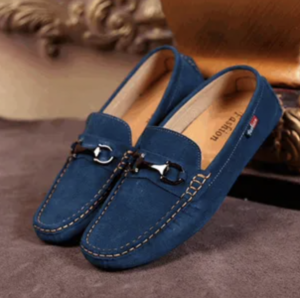The footwear industry is continuously evolving, with new technologies playing a crucial role in enhancing both the production process and the quality of women’s shoes. From innovative materials to advanced manufacturing techniques, these technologies are revolutionizing how high-end footwear is made. Here’s a look at some of the cutting-edge technologies making an impact.
1. 3D Printing
3D printing, or additive manufacturing, is one of the most transformative technologies in the footwear industry. It allows for the rapid prototyping of shoe designs, enabling designers to create and test multiple iterations in a fraction of the time it would take using traditional methods. This technology also opens the door to custom-made shoes, where every pair can be tailored to the exact measurements of the wearer’s feet, ensuring a perfect fit. Moreover, 3D printing can reduce waste by using only the necessary amount of material.
2. Advanced Materials
The development of advanced materials has significantly improved the quality and performance of women’s shoes. Innovations like sustainable leathers, lightweight yet durable synthetics, and high-performance fabrics are being used to create shoes that are not only stylish but also more comfortable and long-lasting. For instance, graphene—a material known for its strength and flexibility—is being incorporated into shoe soles to enhance durability while maintaining a lightweight structure. These materials are also designed to be more breathable and resistant to wear and tear.
3. Smart Manufacturing
Smart manufacturing, powered by the Internet of Things (IoT) and Artificial Intelligence (AI), is streamlining the production process of women’s shoes. IoT devices monitor every step of the manufacturing process, from material selection to final assembly, ensuring consistent quality and reducing the risk of defects. AI algorithms analyze data collected during production to optimize workflows, predict maintenance needs, and improve overall efficiency. This leads to faster production times and higher-quality shoes.
4. Robotics and Automation
Robotics and automation are playing an increasingly important role in footwear production. Automated systems can handle repetitive tasks such as cutting, stitching, and assembly with precision and speed, reducing human error and increasing output. Robotics are also being used in quality control, where machines equipped with sensors and cameras can detect defects or inconsistencies that might be missed by the human eye. This ensures that every pair of shoes meets the highest standards before reaching the customer.
5. Digital Design Tools
Digital design tools are revolutionizing the way women’s shoes are designed. Software like CAD (Computer-Aided Design) allows designers to create highly detailed 3D models of their shoe designs, which can be easily adjusted and refined. These tools also enable virtual testing, where designs can be simulated under different conditions to assess their performance. This reduces the need for physical prototypes and accelerates the design process, allowing for more creativity and innovation.
6. Sustainable Technologies
Sustainability is becoming a key focus in the footwear industry, and new technologies are helping to make shoe production more eco-friendly. Technologies such as waterless dyeing, biodegradable materials, and recycled components are being integrated into the manufacturing process. Additionally, advancements in energy-efficient machinery and waste reduction techniques are helping brands minimize their environmental impact while still producing high-quality shoes.
7. Virtual Reality (VR) and Augmented Reality (AR)
VR and AR technologies are enhancing the design and marketing of women’s shoes. In the design phase, VR allows designers to create and explore virtual prototypes in a fully immersive environment, leading to more precise and innovative designs. In retail, AR is being used to create virtual fitting rooms, where customers can try on shoes digitally before making a purchase. This not only improves the shopping experience but also reduces the rate of returns, contributing to more efficient production.
Conclusion
The integration of new technologies in the footwear industry is revolutionizing the production and quality of women’s shoes. From 3D printing and advanced materials to smart manufacturing and sustainable practices, these innovations are helping brands produce footwear that is not only stylish and comfortable but also of the highest quality. As technology continues to advance, the possibilities for improving the production and quality of women’s shoes are virtually limitless, promising an exciting future for both designers and consumers.




